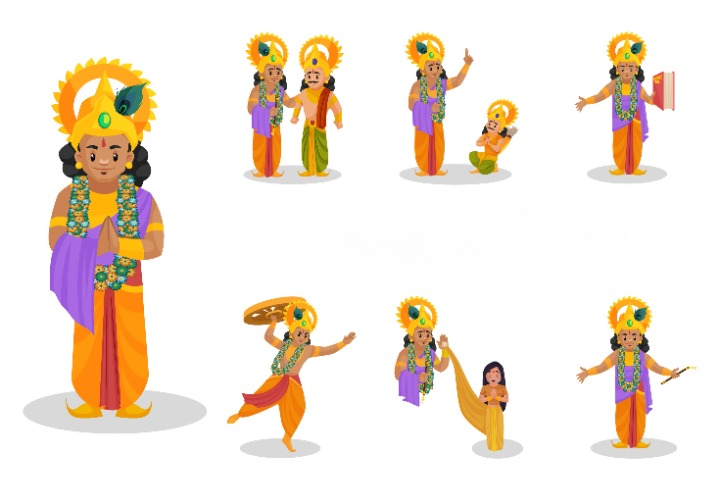The Bhagavad Gita is considered to be the most sacred book of Hindus; it is a part of the timeless epic, Mahabharata. The Bhagavad Gita elaborates on the discussion that takes place between Lord Krishna and Arjuna, who is among the five Pandava brothers. Just before the start of the Kurukshetra war, Arjuna becomes hesitant, as he needs to fight against his relatives, elders, teachers, and friends.

It is at this point that Krishna begins to advise and guide Arjuna, to dispel his dilemma. This particular conversation extends into a lengthy dialogue where the Lord explains numerous dharmik, Spiritual, and philosophical aspects. These are also inclusive of details related to the four yogas and their significance: Karma Yoga, Bhakti Yoga, Jnana Yoga, and Raja Yoga.
- Karma Yoga: Karma Yoga is the path of action where Lord Krishna says that a person should do their work without getting concerned about the result. The Lord urges people to perform actions that conform to their specific dharmas. He adds that human beings have control just over their actions and not the eventual outcomes. What is going to be the result is an aspect that must be left to the choice of God. And, one has to adhere to their dharma devoid of any selfish motives.
- Bhakti Yoga: The path of devotion is what Bhakti Yoga is all about. In this Yoga, Krishna stresses the relevance of having boundless devotion towards one’s chosen deity. Here, an individual is free to develop devotion towards any of the divine forms of their preference.
This devotion is called the love for the divine, too. Things like chanting, prayers, and providing selfless service come under the purview of Bhakti Yoga. - Jnana Yoga: Under Jnana Yoga, Lord Krishna speaks about [sharpening the intellect] by acquiring wisdom and knowledge. People who practice Jnana Yoga relentlessly strive to comprehend reality and avoid confusion about Maya. Because of their efforts, the sadhakas gain the knowledge that helps them to differentiate between the perishable human body and the deathless soul. When all four Yogas are taken into account, Jnana Yoga is treated as the toughest of all. For, Jnana Yoga rigorously tests the intellect of a person. They are compelled to struggle a lot before they can have a proper understanding of reality.
- Raja Yoga: The views of scholars are divided about Raja Yoga. A few scholars state that Raja Yoga is a higher level an aspirant attains, after they follow Karma Yoga and Bhakti Yoga, with full sincerity. It’s not any separate form of Yoga. And, some philosophers and saints argue that Raja Yoga is a unique discipline. The goal of Raja Yoga is to reach a state of stillness of mind where a person can go inwards. There they can get in touch with the real self, which is nothing but a part of the Supreme Source. Raja Yoga enumerates numerous meditation techniques that assist people in realizing the objective.
The four Yogas covered in Bhagavad Gita are different from the Ashtanga Yoga of Patanjali and the Hatha Yoga. Hatha Yoga and Patanjali Yoga are predominantly focused on the physical aspect of Yoga. They mainly explain numerous yoga postures and exercises. But, the Yogas of Bhagavad Gita is concerned with helping an individual realize their true self. For this purpose, The Gita underscores the importance of selfless action, devotion, knowledge, and meditation.
The four Yogas covered in Bhagavad Gita are different from the Ashtanga Yoga of Patanjali and the Hatha Yoga. Astanga Yoga is an 8-step process and the name itself means 8 steps. Hatha Yoga is a modification of Astanga Yoga by de-emphasizing the first 2 steps called yama and niyama. Broadly, Hatha Yoga is focused on the physical aspect of Yoga. They mainly explain numerous yoga postures and exercises.
The Yogas of Bhagavad Gita are different, firstly they do not involve any asanas. More importantly, they help an individual realize the divine while living in this material world. The yogas of Bhagavad Gita bring about an inner transformation while giving 4 choices for an individual. For this purpose, The Gita advocates 4 different yogas options of selfless action, devotion, intellect, and self-control.
